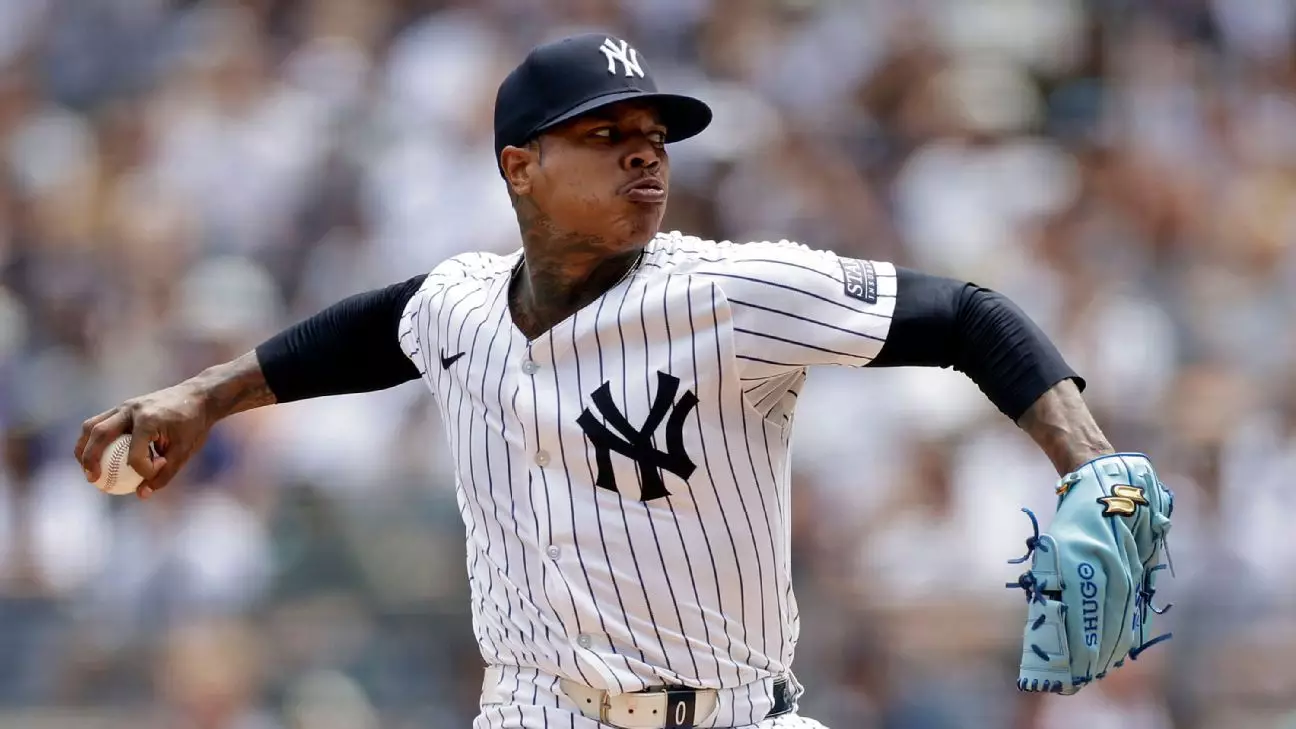The New York Yankees’ decision to release Marcus Stroman underscores a broader truth about elite baseball clubs: the challenge of balancing traditional metrics with raw potential. Stroman, once celebrated for his resilience and competitive edge, became emblematic of the team’s ongoing struggle to harness the right talent at the right moment. His signing, a lucrative two-year deal, was a calculated gamble born out of the Yankees’ desire to shore up their starting rotation amidst injury uncertainties and roster gaps. However, that gamble did not pay off, revealing that high-profile signings often carry unseen flaws that can unravel quickly under the intense pressure of Yankees’ expectations.
While Stroman’s previous reputation as an All-Star with Chicago seemed promising, his tenure in New York was marred by inconsistency and unmet expectations. His ERA of 6.23 in nine starts starkly contrasts with his prior success, exposing a disconnect between potential and performance. The Yankees, renowned for their ruthlessness when outcomes falter, showed little patience with a pitcher who couldn’t deliver stable results. The decision to cut Stroman was not merely about performance but also about managing a roster already squeezed for space due to aggressive mid-season acquisitions. This move highlights how the Yankees prioritize proven stability and immediate returns over the perceived upside of veteran pitchers struggling to adapt.
The Reality of Big-Name Signings in a Ruthless Market
Stroman’s departure shines a harsh spotlight on the high costs and uncertain returns associated with signing veteran players on hefty contracts in a competitive environment like New York. He was signed with expectations of being a reliable contributor, especially considering his status as a seasoned pitcher with over a decade of experience. Yet, injuries, form fluctuations, and a lack of cohesion on the mound rendered him a redundancy rather than an asset. The Yankees, always driven by the pursuit of championships, demonstrated that financial commitments no longer guarantee portfolio stability when performance declines.
More telling is the failure amid this tumult to find a trade partner during the offseason. This inability to offload Stroman pre-season signals how the market for middle-tier starters has contracted, especially with teams wary of long-term commitments. It underscores the harsh reality for many veterans: once their performance dips, opportunities for renewal diminish rapidly, and teams are eager to cut losses rather than invest further. For Stroman, this translates into an uncertain free-agent future that, big picture, exemplifies baseball’s brutal economics—talent alone is insufficient when results falter.
Assessing the Yankees’ Rotation Strategy and Future Outlook
This roster churn also reflects a broader strategic shift by the Yankees. Once reliant on star power and deep pockets, the franchise now appears to favor youth and proven, cost-effective options. The elevation of rookie Cam Schlittler to the starting rotation further illustrates the organization’s push toward developing internal talent and capitalizing on emerging prospects. The Yankees’ decision to release Stroman despite his experience underscores their confidence in youthful resilience, even if it comes with a learning curve.
Furthermore, Stroman’s departure does something more than clear a roster spot; it signifies a cultural move within the Yankees toward pragmatic roster management. Instead of clinging to underperforming veterans, they prioritize flexibility and potential upside. This strategic pivot might serve them well if they can develop the younger arms coming through the ranks. However, it also exposes an inherent risk: betting on unproven talent without veteran anchors could backfire in the high-stakes environment of October baseball.
In a broader sense, the case of Stroman exemplifies how the Yankees, and perhaps modern baseball management at large, are evolving. Success isn’t solely measured by accumulated talent but by the ability to adapt swiftly, cut losses, and prioritize the long-term health of the franchise over short-term fixes. Stroman’s brief stint with the Yankees encapsulates the volatility inherent in high-profile signings—an uncertain trade-off which, at its core, is about betting on potential amid a landscape unforgiving of failure.

